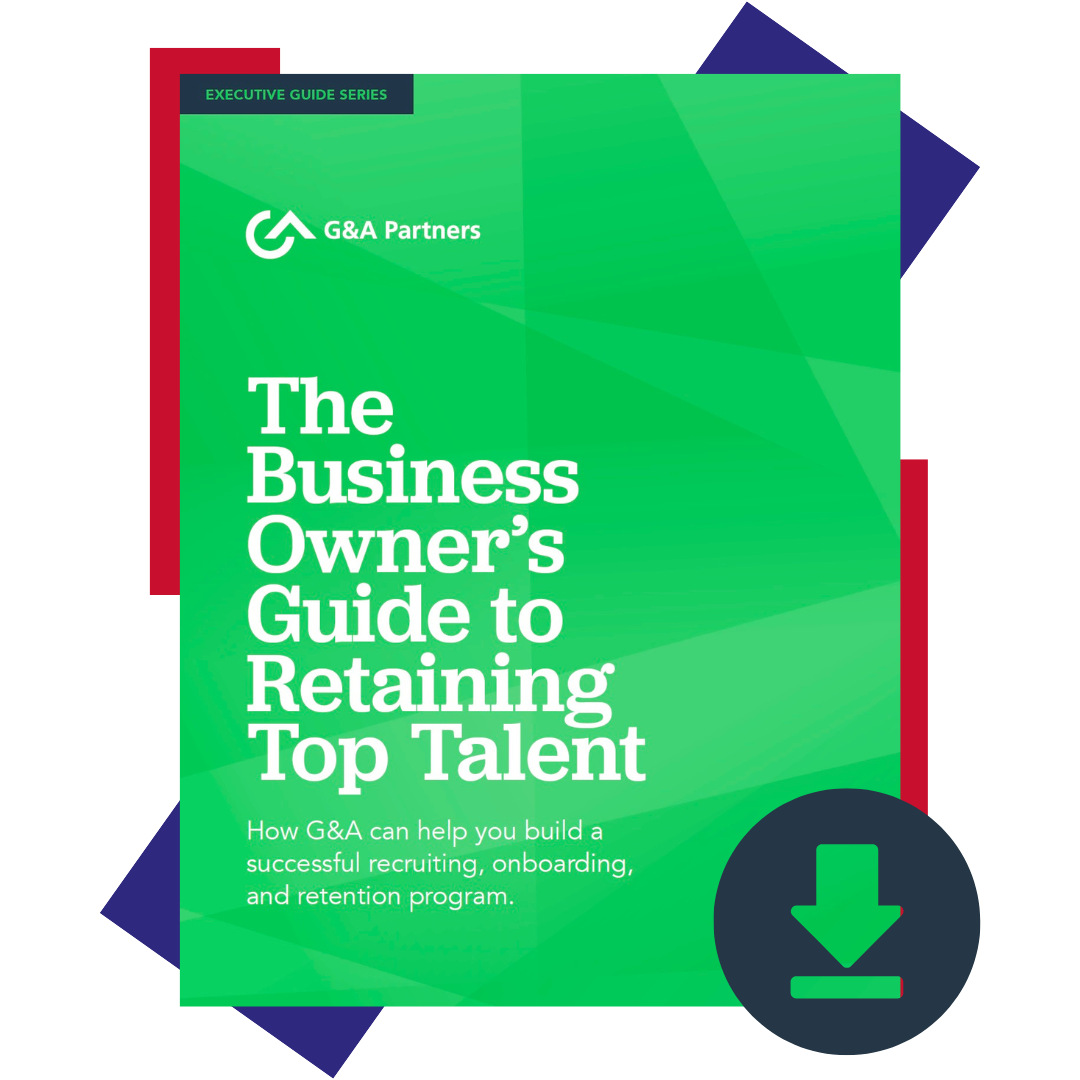Did you know the average cost to replace a terminated employee (i.e. the cost of employee turnover) is about 50 percent of that employee’s annual salary? And that number can increase based on the level of the employee and the job market in which someone is hired.

What is the average cost of employee turnover (by position type)?
The chart below indicates the breakdown of replacement costs that an employer might incur to replace certain levels of employees:
Position Type | Average Replacement Cost |
| Entry-level/non-skilled | 30-50% of employee’s annual salary |
| Service/production | 40-70% of employee’s annual salary |
| Clerical/administrative | 50-80% of employee’s annual salary |
| Skilled hourly | 75-100% of employee’s annual salary |
| Professional | 75-125% of employee’s annual salary |
| Technical | 100-150% of employee’s annual salary |
| Supervisor | 100-150% of employee’s annual salary |
What are the costs associated with employee turnover?
Costs associated with replacing an employee generally can be sorted into one of three categories:
- Separation costs
- Recruitment costs
- Productivity costs
Each of these three employee turnover cost categories can be further divided into hard- and soft-dollar costs:
Hard-dollar costs are expenses that are quantifiable in actual dollar costs, such as final pay expenses, temporary employee pay, recruiting firm fees, advertising fees for job postings, overtime for retained employees to cover a reduced workforce, and other similar expenses.
Soft-dollar costs are expenses that aren’t as easily tracked on a balance sheet, such as costs related to lower productivity, interviewing time spent by HR and hiring managers, the time taken to review resumes, and training time for new hires to bring them up to full productivity standards.
Costs Associated with Employee Turnover: Separation Costs
Separation costs are the costs an employer incurs during the process of terminating an employee, such as severance pay, costs associated with unemployment insurance claims, and the expense of continued benefits.
Soft-dollar costs, however, are often missed by employers in their estimates of separation costs. These can include time other employees spend processing the employee’s termination, such as removing the employee from payroll or the benefits systems, conducting exit interviews, and responding to unemployment claims. In one way or another, every employee who leaves an organization, even those who resign or retire, will cause an employer to incur at least some expenses related to the separation.
Costs Associated with Employee Turnover: Recruitment Costs
Recruitment costs are those that an employer incurs in the search to fill a newly vacant position. These include everything from soft costs, such as developing an updated job description and training a new employee, to hard costs, which can include recruitment agency fees, temporary employee coverage, and more.
In fact, every open position represents hours and hours of work for recruiters, HR professionals, and hiring managers – who must sort through applications and resumes, deliberate and narrow down the applicant pool, schedule and participate in interviews, and then meet again to select a candidate. It’s also becoming more commonplace for employers to conduct pre-employment screenings to assess an applicant’s personality and skill sets, and as the talent pool is narrowed down, promising candidates may be required to meet with multiple people within the organization. The longer the hiring process, the more expensive it becomes, with many of these costs hidden.
Costs Associated with Employee Turnover: Productivity Costs
Productivity costs (often harder to quantify than separation or recruitment costs) can include soft costs represented in the hours of lost productivity that pile up as a position remains unfilled and the time other employees spend trying to pick up the slack. But when an employee leaves, employers don’t just lose a worker – they lose all the experience and expertise that employee brought to the job and any costs associated with employer-provided training.
Productivity costs also apply to new employees and the time it takes them to get up to the level of production and productivity of the previous employee. This can range from just a few days to a few months (or even years) depending on the type of position they’re filling and the level of experience of the lost employee.

How do you calculate employee turnover costs?
As a business owner, you understand that your employees are your most valuable asset (and often your most expensive). When an experienced and trusted employee resigns, that lost intellectual value can come at a tremendous cost to your company.
Your best defense against incurring these costs is to create a company culture that increases employee satisfaction (and retention) by prioritizing employee engagement, career advancement, and competitive pay and benefits. These measures can dramatically cut down on turnover at your organization, but unfortunately, there are instances where losing an employee is unavoidable.
Investigating your own costs of employee turnover can not only help you to understand the true impact of a loss to your bottom line, but it can also help you to evaluate the cost/benefit ratio of implementing additional retention efforts.
What is the formula for calculating employee turnover cost?
To start the process of determining the hard costs of turnover in your own organization, you will need to gather the following information:
- Overtime paid to retained employees because of the employee’s departure
- Costs to hire temporary workers, independent contractors, or consultants
- Direct costs for recruiting (agency fees, advertising costs, background check/drug screen vendor costs, etc.)
- The departed employee’s rate of pay (including fringe benefit and tax costs covered by the employer) for the period the position was vacant.
Calculate the first three bullets and add them together. Subtract the total of the last bullet (representing the money not spent on the employee) from the first number. This will reveal hard costs resulting from a separation.
Soft dollar costs are more elusive. Determine the number of hours HR employees and managers spend reviewing resumes, setting and conducting interviews, and obtaining and reviewing background checks and drug screenings. Then multiply those hours by the participant’s rates of pay to give you a starting point.
Lost productivity can also be difficult to nail down. If you’re seeing lower production, you’ll need to determine if it’s due to the employee’s departure, seasonal lows, a combination of the two, or other factors. For example, temporary help has its own costs in lower productivity while the temporary helper learns the role, and this is repeated when a new employee is hired (unless the temporary helper is hired in the role).
The initial costs of replacing an employee can be the tip of the iceberg. When you (and your organization) begin to work out the various hidden costs associated with replacing employees, it’s easy to see how high rates of turnover negatively impact your bottom line. However, implementing thoughtful and effective retention strategies can help you hold on to valued team members and reduce turnover expenses. Check out our complete Retention Guide below for tips and strategies.
Guide
The Business Owner's Guide to Retaining Top Talent
This toolkit from G&A can help your company build a booming recruiting, onboarding, and retention program.

